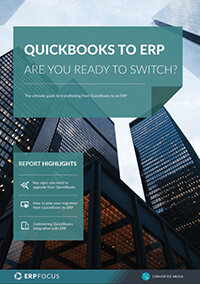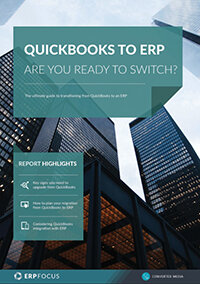Getting Started with QuickBooks to ERP Data Migration
As an IT manager, you have determined that your enterprise processes need to be lifted up to the next level. You aim to achieve this by migrating from QuickBooks to a more sophisticated ERP system offering deeper processing capability. Subsequently, you have taken your conclusion to senior and line management in the form of a systems upgrade proposal who, in turn, have also been sold on the change proffer; but what now?
The HSW Loop
Well, aside from the obvious need to identify and purchase a next-gen ERP system, along with securing a competent technical partner to help you guide the balls as they roll around on the table, the next critical set of processes will be planning an ERP data migration project. This project will be driven by a clear goal of keeping the entire ERP evolution from falling by the wayside. In the case of QuickBooks data migration, there are three essential categories of work, what I refer to as the ‘HSW (H-SAW) loop’.
Hardware
In this case, ‘H” stands for Hardware, meaning an inventory and quality investigation regarding all, (and I mean all), hardware, firmware, and/or peripheral systems that blink, buzz, doink, and whirr, in order to execute, store and support information across one’s QuickBooks system.
This area of focus also extends to datarate measurements, accessible static and/or dynamic bandwidth, gateway/routing limitations, and signal delivery capabilities and dependencies regarding one’s particular cable infrastructure. The goal in this case is to determine whether the enterprises’ physical environment will scale-up easily while attempting to avoid QuickBooks data migration issues beyond the upgrade processes themselves.
Software
“S’ stands for Software and, again, we’re talking about any, and all, software systems that support, secure, manage, balance, and/or execute data across the enterprises’ QuickBooks infrastructure. In this case, this inventory and quality investigation regards the central potential of non-compliance between what the current QuickBooks platform requires and utilizes, versus what will be required from any new ERP system.
Wetware
‘W’ stands for Wetware. In this case, the manager is looking for process similarities, and/or dissimilarities, associated with QuickBooks data protocols, versus how any future ERP system protocols will need to operate. This process should make an attempt to clearly understand any system enterprise processing colloquialisms, also sometimes referred to as ‘bad habits’.
every enterprise/divisional workforce harbors non-standard data processes that are typically justified as being ‘simple systems work-arounds
Identifying these colloquialisms will require a considerable degree of patience and tact, since every enterprise/divisional workforce harbors non-standard data processes that are typically justified as being ‘simple systems work-arounds.’ However, if a QuickBooks ‘work-around’ is not clearly identified and understood as a practical matter, when it comes to migrate data to a new system, issues of process non-compliance will create additional turmoil when it is least appreciated.
While these three focus points only begin to form the foundations for what will be required of a serious migration plan, they will give you some bread crumbs to start with, since as the old saying goes, ‘start where you stand or you’ll never get anywhere.’
Free white paper

Quickbooks to ERP: Are You Ready to Switch?
Get the definitive guide to converting your business from Quickbooks to ERP

Featured white papers
-

Quickbooks to ERP: Are You Ready to Switch?
Get the definitive guide to converting your business from Quickbooks to ERP
Download
Related articles
-

QuickBooks vs ERP: What ERP does better
Could your accounting & inventory management benefit from upgrading to ERP?
-

Secret KPI: Why Your ERP Implementation Team Matters More Than Software
Learn how Godlan ensures successful ERP implementation for manufacturers with proven strategies &...
-

Why small businesses upgrade from QuickBooks to ERP
Find out why some companies choose to upgrade from QuickBooks to ERP software

